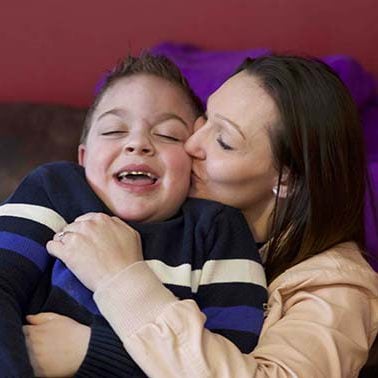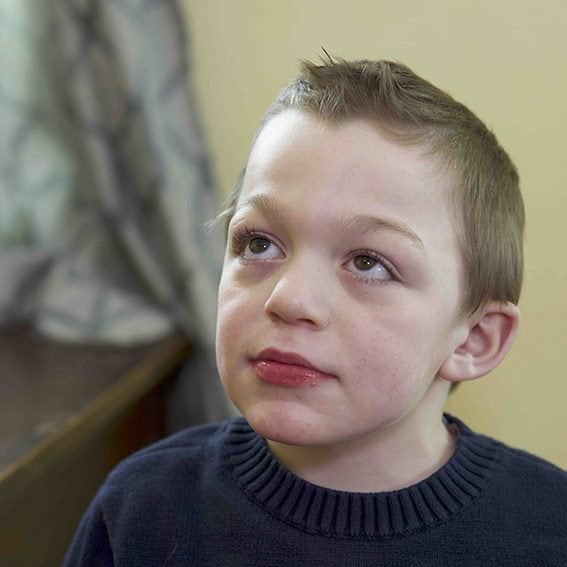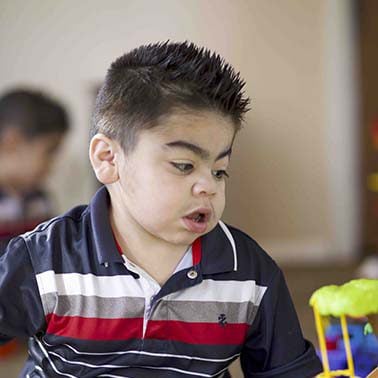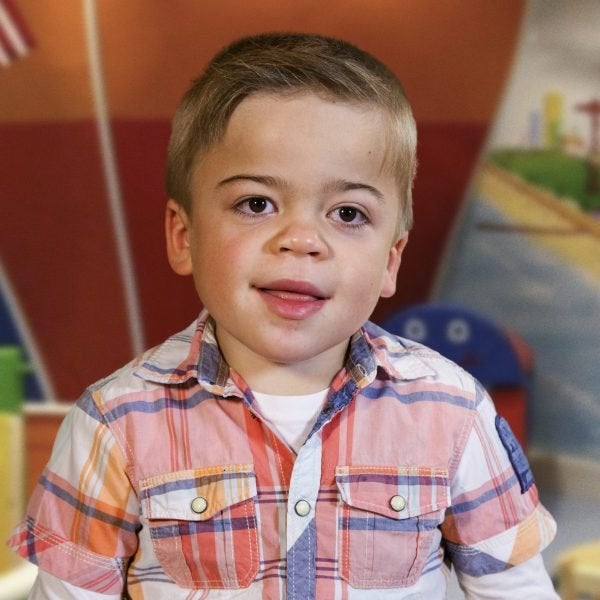How is Hunter syndrome diagnosed?
Hunter syndrome can be challenging to diagnose, because of the number of signs and symptoms, many of which overlap with common childhood complaints. This, combined with the rarity of the condition, means that for many children, particularly those with the non-neuronopathic type of Hunter syndrome, it can take years to reach a diagnosis.
The progressive nature of the condition means that early diagnosis is essential, so that disease management can begin as soon as possible.


Diagnostic tests
There are a number of diagnostic tests that may be performed to determine or rule out a diagnosis of Hunter syndrome.
-
URINARY GAG TESTING
-
IDURONATE-2-SULFATASE ENZYME ACTIVITY
-
GENETIC TESTING & PARENTAL COUNSELLING
-
PRENATAL DIAGNOSIS
Some of the GAGs that build up in the cells are excreted from the body in the urine, so an unusually high level of urinary GAGs can indicate an MPS disease. Testing for urinary GAGs is often the first test performed if an MPS disease is suspected. Urinary testing is non-invasive (it requires testing a sample of urine) and it is widely available.
Urinary GAG levels are increased in other MPS diseases, not just Hunter syndrome (MPS II), so other tests may be needed to confirm or rule out Hunter syndrome.
If the urinary GAG level is unusually high, or if there is a family history of MPS II, the activity of the enzyme iduronate-2-sulfatase (I2S) can be tested using a blood sample.
Testing a second sulfatase enzyme will rule out the possibility of a different condition, multiple sulfatase deficiency, a lysosomal storage disease (LSD) in which all of the sulfatase enzymes are affected.
Testing for the gene that is mutated in Hunter syndrome (IDS) can identify people as carriers, which can help inform family planning.
Over 500 different mutations of the IDS gene have been observed, and this variability makes it hard to predict the disease symptoms. However, there is an association between mutations that cause large-scale changes to the IDS gene (such as deletions of genetic material) and neuronopathic Hunter syndrome.
It is advised that once the mutation has been identified, a pedigree (family tree) analysis is carried out to see which family members may also be at risk of having the mutated gene. Genetic counselling should be offered to the family members, to inform them about the inheritance and implications of the genetic condition.
Hunter syndrome can be diagnosed before birth. This is done by measuring the activity of the I2S enzyme in placental tissue or the amniotic fluid.
After diagnosis: what next?
It can be distressing to receive a diagnosis of Hunter syndrome. It can also be hard to explain the disease to your child and other members of your family. Support is available and can help you and your family. Visit the Resources page, and read patient and carer stories to find out how the condition affected others.
It is likely that a number of specialist healthcare professionals will be involved in your child’s care to help manage a range of symptoms. It can be overwhelming to deal with this number of specialists, and to
keep track of appointments and the information from each one. The information leaflet Discussing Hunter syndrome with your child’s doctor has space to record this information, and may help prompt questions to ask, so you can make the most of your appointments.
The leaflet After diagnosis: what next? describes the first steps after receiving a diagnosis of Hunter syndrome and includes some stories from people with the condition, explaining how the first few days post-diagnosis affected them.
After diagnosis: what next? describes the first steps after receiving a diagnosis of Hunter syndrome


We found a really good doctor and she wanted to test for developmental delays. She said she had a presumption based on the way Kingston looked. The doctor said she wanted to get him tested, and that Hunter might have the same problem. She sent us to a geneticist but we didn’t really know what was wrong until we got the phone call stating that the boys had MPS II. Hunter was 2 years old and Kingston was 14 months. It was a hard time, lots of tears, lots of denial... I was actually very grateful to the doctor that she caught it just by looking at my children and that we caught it early. It was right after they were diagnosed I found out I was pregnant with Nash, and we did all the genetic testing. We found out that he was a boy at 8 weeks gestation, and then at 12 weeks I found out he had Hunter syndrome.
- Brittany, mother of Hunter and Kingston


When we got the diagnosis, my reaction was definitely denial, it was anger. It was a lot of emotions. It was shock. The worst part is that it hits you all at once. It was rough. I had to catch my breath. We came home and for the rest of that day we were kind of out of it. But by the next morning we both thought, alright, this is the hand we’re dealt and what are we going to do about it? We came in contact with a lot of people who gave us hope. My sister found the MPS society and they called me right away and I was sent information and pamphlets. My advice is, if you feel like there’s something wrong, just don’t stop. If you notice anything odd, don’t let people brush it off. Get it checked out anyway.
- Toni Ann, mother of Aiden and AJ


A few months before Silas’ 2nd birthday, our little boy was given a MRI scan. The head physician told us that the MRI showed an abnormality that might be a symptom of a rare disease called mucopolysaccharidosis. The information he gave us on mucopolysaccharidosis that evening was very vague. It could be that he did say something concrete, but it didn't reach me because I felt totally paralysed. I couldn't even cry. It felt like when you are pushed down a big hill, it takes your breath away and it’s like you cannot think any more. We had to wait another month for the blood test results to clearly tell us that Silas had Hunter syndrome. It’s hard when you’ve got a healthy child and then just before his 2nd birthday you are told you’ve got a really, really ill child.
- Natalie, mother of Silas
Discussing Hunter syndrome with your child’s doctor describes the first steps after receiving a diagnosis of Hunter syndrome
